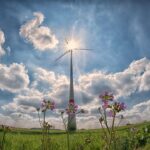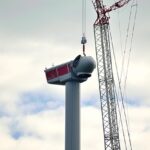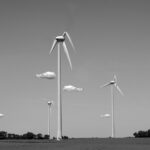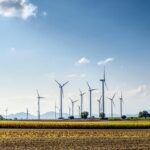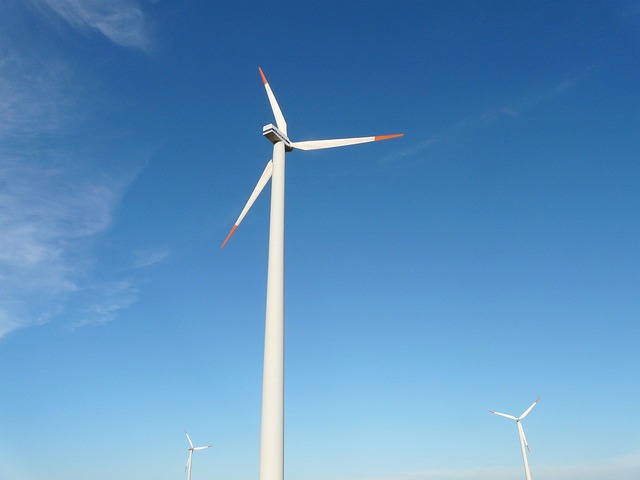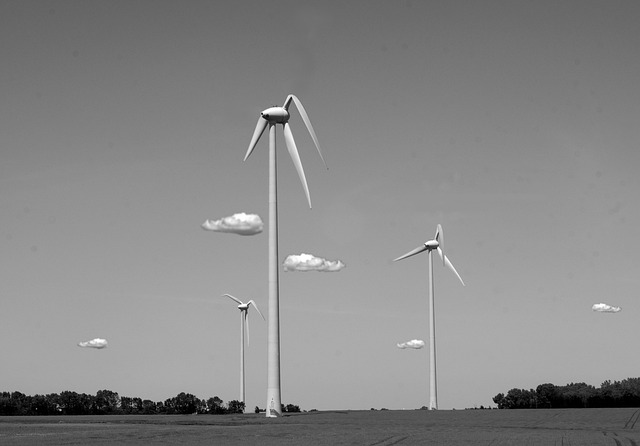From Coast to Coast: Wind Power Across the Landscape
Wind power has become a key player in the global transition towards sustainable energy. From the sun-drenched plains of Texas to the wind-swept shores of Maine, this form of renewable energy is reshaping the American landscape. With climate change posing a significant threat to our planet, harnessing the power of wind offers a viable solution to reduce our reliance on fossil fuels while promoting environmental sustainability. This article explores the history, technology, impact, and future of wind power across the United States.
The Rise of Wind Power: A Historical Perspective
The use of wind for energy is not a new concept; it dates back thousands of years when ancient civilizations utilized windmills for milling grain and pumping water. However, the modern wind power industry began to take shape in the late 19th century, particularly in the United States where the first wind turbine designed for electricity generation was built in 1888 by Charles Franklin Brush. Despite its potential, wind energy fell into relative obscurity until the 1970s when the energy crises prompted a renewed interest in alternative energy sources.
Following the oil embargo in 1973, renewable energy technologies received a surge of investment and research. The U.S. government implemented tax incentives and grants to encourage wind energy projects, which laid the groundwork for the expansion we see today. By the turn of the 21st century, wind power had emerged as one of the fastest-growing energy sectors, driven by technological advancements, economic incentives, and growing environmental awareness.
Technology and Innovation: How Wind Turbines Work
The heart of wind power lies in its technology—wind turbines that convert the kinetic energy of wind into mechanical energy and, subsequently, into electricity. Modern wind turbines are complex machines that consist of several key components:
Rotor Blades: These large blades are designed to capture energy from the wind. The length and shape of the blades directly affect the efficiency of the turbine. Most turbines today are equipped with two or three blades that rotate around a hub.
Generator: As the rotor blades turn, they spin a shaft connected to the generator. This conversion process generates electricity by moving magnets within coils of wire through electromagnetic induction.
Tower: Wind turbines are typically installed on tall towers to access higher wind speeds. Towers can vary in height but are often between 80 and 100 meters tall, significantly increasing their energy capture potential.
Control System: Modern wind turbines are equipped with sophisticated computer systems that maximize efficiency. These systems adjust the angle of the blades and the orientation of the turbine to face the wind for optimal energy capture.
Advances in materials and engineering have led to the development of larger and more efficient turbines. The current trend is toward offshore wind farms, where larger turbines can harness the relentless winds over the ocean, producing more power than their land-based counterparts.
The American Wind Landscape: Regional Insights
The United States is endowed with vast wind energy potential, with certain regions particularly suited for wind power generation. States such as Texas, Iowa, and California are leading the way in harnessing wind energy.
The Great Plains: Spanning from North Dakota to Texas, the Great Plains are the epicenter of wind power in the U.S. These states enjoy consistent and strong winds, making them ideal for large wind farms. Texas, for example, has not only the largest wind energy capacity but also leads the nation in the number of operational wind turbines. The state has invested heavily in infrastructure to support wind energy, including transmission lines to transport electricity generated in remote areas to population centers.
Midwest Innovation: States like Iowa and Illinois have embraced wind power as a critical component of their energy portfolios. Iowa has consistently ranked among the top states for wind energy production relative to its energy usage. The integration of wind energy has significantly bolstered local economies while providing jobs in manufacturing and maintenance.
Coastal Markets: California and the Northeastern states, including Massachusetts and New Jersey, have also tapped into their wind potential, though their approach tends to differ. California has invested in both onshore and offshore projects, while states along the East Coast are rapidly expanding their offshore wind capacities to take advantage of consistent ocean winds.
Environmental and Economic Impact
The transition to wind power is not merely an energy issue; it has profound implications for environmental protection and economic development. Wind energy is one of the cleanest forms of electricity generation, producing no emissions during operation and significantly reducing greenhouse gas emissions compared to fossil fuel sources.
Moreover, the growth of the wind power industry has created thousands of jobs across various sectors—ranging from manufacturing and installation to maintenance and operations. This not only strengthens local economies but also promotes energy independence, as states rely less on imported fuels.
Furthermore, wind farms require significantly less water than traditional thermal power plants, making them an attractive alternative in areas where water scarcity is a concern. As climate patterns shift due to global warming, the vector of energy production will play a crucial role in ensuring sustainable resource management.
Challenges in the Wind Power Landscape
Despite its many advantages, the wind power industry faces several challenges. One of the primary concerns is the intermittent nature of wind energy; wind does not blow consistently, leading to fluctuations in electricity generation. This variability necessitates the development of energy storage systems and grid management solutions that can balance supply and demand effectively.
Environmental concerns also persist, particularly regarding the impact of wind turbines on wildlife. Birds and bats are at risk of collisions with turbine blades, prompting industry stakeholders to implement mitigation strategies like siting turbines away from migratory paths and using technology to detect and deter wildlife.
Additionally, the production of wind turbines requires significant materials, such as steel and concrete, which have their own environmental impacts. The industry is increasingly focusing on sustainable sourcing and recycling programs to address these concerns and reduce the overall carbon footprint of wind energy production.
The Future of Wind Power in the U.S.
As the demand for renewable energy continues to grow, the future of wind power appears bright. According to the U.S. Department of Energy, wind energy is expected to provide a substantial portion of the nation’s electricity by 2030, with potential advancements in technology further increasing efficiency and lowering costs.
Offshore wind projects are poised to play a critical role in this transition. With federal support and numerous projects in the pipeline, the East Coast is set to emerge as a hub for offshore wind energy, complementing the established onshore wind farms in the Midwest and South. Innovations in turbine design and installation techniques are making these projects not only feasible but also economically viable.
Moreover, the evolving regulatory landscape is becoming increasingly favorable for renewable energy. As states implement ambitious renewable portfolio standards and carbon reduction goals, wind power will likely continue to receive the investment and policy support necessary for expansion.
Conclusion: A Wind-Powered Future
Wind power represents a clean, sustainable, and increasingly vital source of energy that can contribute significantly to meeting the energy demands of the United States. From the vast plains of the Midwest to the rugged coastlines of the Atlantic, the potential of wind energy is being realized in diverse landscapes across the country. As we forge ahead into a future shaped by climate resilience and energy security, wind power is not just a passing trend; it is an integral part of a comprehensive strategy to combat climate change and promote a sustainable energy future.
Investing in wind energy is not merely an investment in technology but a commitment to our planet’s health and the well-being of future generations. By understanding and embracing the full potential of wind power, we can harness the winds of change—as they sweep across our landscapes—towards a more sustainable and eco-friendly energy paradigm.
